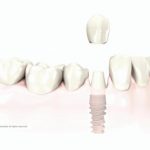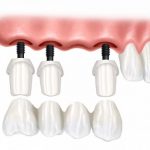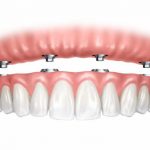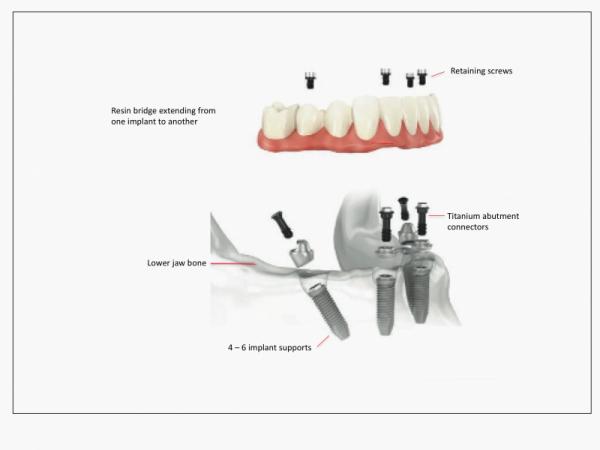Dental implants may be used to replace just a single tooth, several teeth, or a full arch.
High success rates of approximately 98% have been reported over a ten-year period for single tooth implants and groups of implants supporting individual implant crowns or bridges. The images show replacement of a single tooth, and multiple implants used to replace individual teeth.
There are several advantages to this type of treatment:
- An implant-retained crown has a similar appearance to a normal crown and appears to emerge through the gum naturally
- Replacing a missing tooth with an implant avoids having to place crowns on adjacent healthy teeth to support a bridge
- The presence of the implant will slow the change in shape of the bone and gum where teeth have been lost. Indeed, it is possible to improve the contour of the area by placing an implant.
- It may be easier to keep an implant-retained crown or bridge clean than a tooth-supported bridge, which extends over several teeth. As a result, the adjacent teeth will lead a normal uncompromised life.
With time, and especially where there has been extensive infection, the amount of bone available in which to place an implant will diminish. Where necessary the bone and gum may be added to (“grafted”) in order to provide improved fixation for the implant, or to enhance the appearance.
Having placed an implant, the area is usually allowed to heal for a few weeks, depending on the quality of the bone around the implant. A crown or a bridge may then be fabricated, usually in two to three sessions. In certain critical situations, we are able to place implants “immediately” at the same time as extraction takes place. If implants are well-anchored, we may then go on to provide a resin crown or bridge at the same time.



